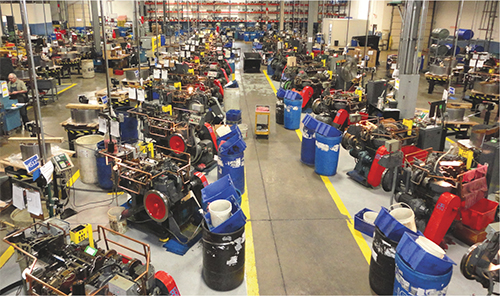Improve Customer Reliability with a FEMA-Based Disaster-Recovery Plan
November 1, 2014Comments
There is an old adage that goes something like this: “When you need a friend, it’s too late to make one.”
There is an old adage that goes something like this: “When you need a friend, it’s too late to make one.”
And at no time is that adage more apparent than when a disaster happens within a manufacturing plant. The owner’s best friend at that point is a disaster-recovery plan.
My client (and PMA member company) Termax Corp., a fastener manufacturer in Lake Zurich, IL, has made a couple of new friends during the last few months as it has worked, along with one of my risk-management service providers Standfast Global and its president Brian McCrane, to create a cloud-based business-continuity plan (BCP). It also has executed an agreement with Belfor Property Restoration, specialists in disaster-recovery and restoration services.
In the event of a disaster at Termax, Belfor pledges to provide Termax with a priority response for rescue and protection of its assets. Belfor’s Red Alert priority response program is available through a dedicated emergency phone number, 24 hours per day 365 days per year. Belfor, a single-source service provider, offers emergency-response services including power generation, water extraction, board-up and barrier erection, temporary roofing, mold remediation, document freeze drying, structural drying, dehumidification, hazardous materials, electronics restoration, data recovery, duct cleaning, decontamination services, machinery retrofitting, vital records recovery, property salvage, contents restoration, project management and consulting services.
A False Sense of Security
Toyota is Asking its Suppliers: If your plant is disabled by fire, flood, earthquake or other disaster, what would you do and how much time would you need to relaunch production? So goes a recent Automotive News report describing the automaker’s push to have suppliers develop and document disaster-recovery plans. Toyota already has conducted a census of its supplies in Japan, and now has embarked on a similar plan throughout North America with its Tier 2 and Tier 3 suppliers.
Companies often are lulled into a false sense of security, believing that they are immune to a disaster. They could be in a location for several years and not suffer any loss greater than a roof leak. Or, business owners may believe that they don’t need a BCP since they have an insurance program that includes business-interruption coverage. They wrongly assume that should they incur a covered loss, their insurance will get them back in business and make them whole, as if the loss never happened.
As an insurance agent for the last 32 years, I can tell you from experience that while business-interruption coverage is critical, it will not always make a business whole. Business interruption pays for loss of profits and continuing expenses, but it will not pay for lost customers. And, once your customers leave and take their business to another metalformer, because you can’t supply their orders, earning back their business when your company comes back online is not a given.
As Termax president Bill Smith says:










